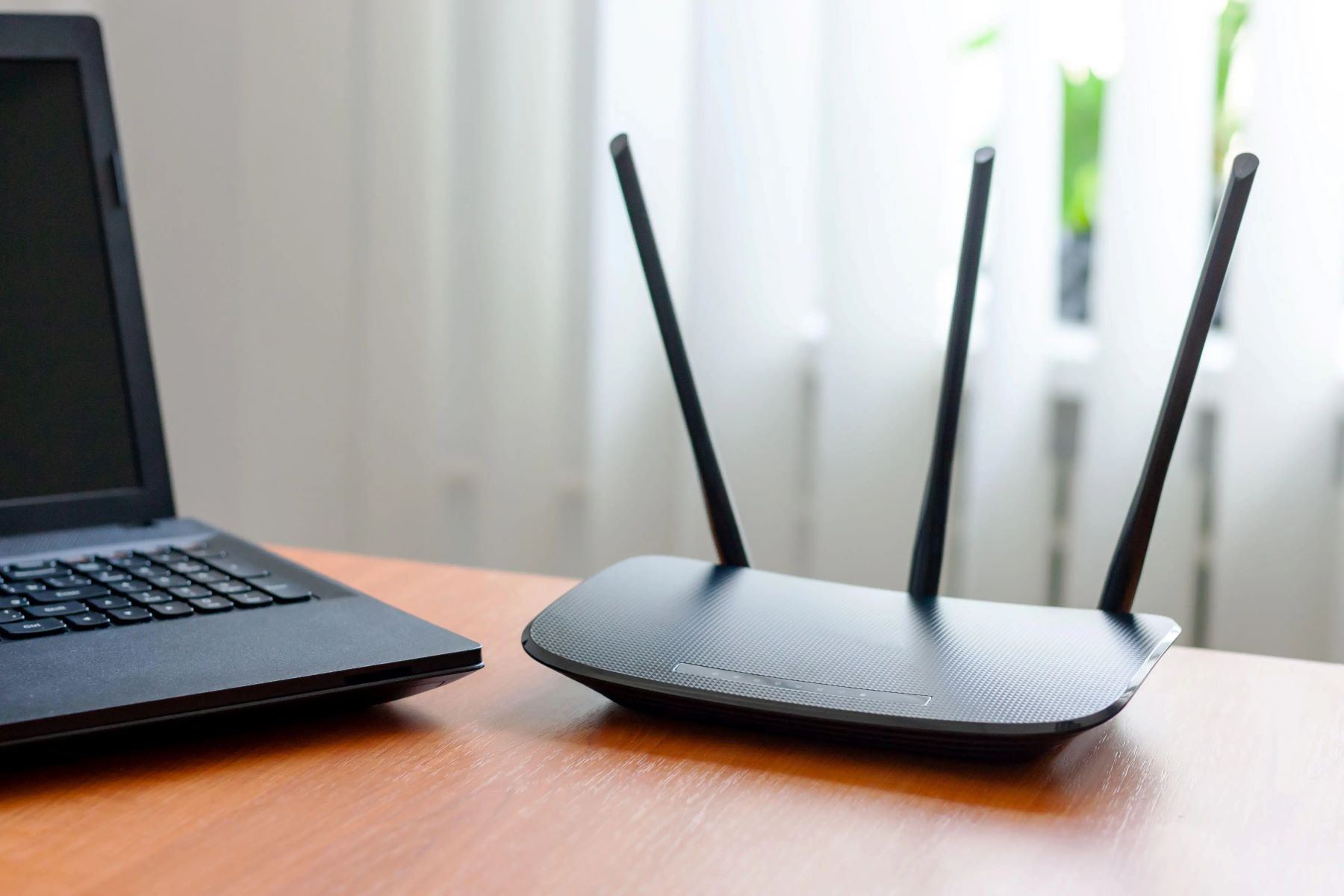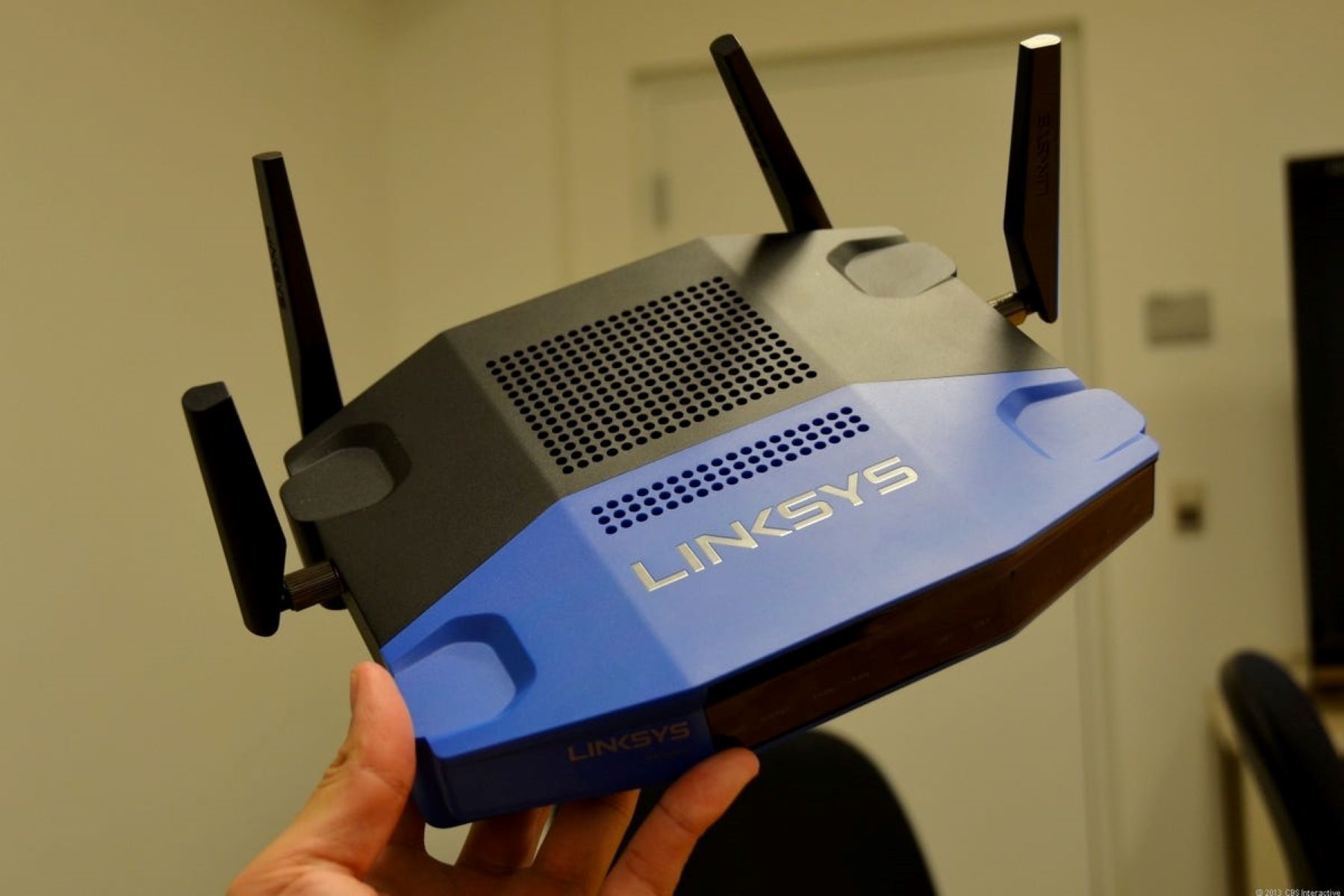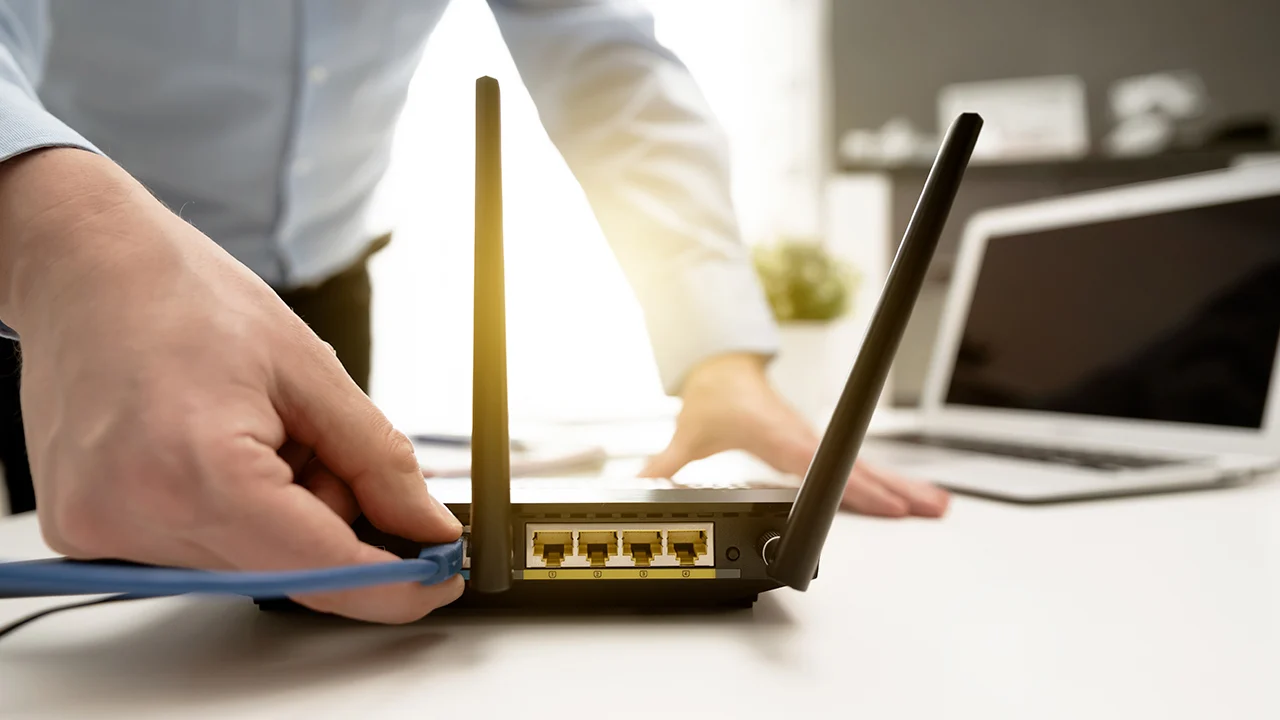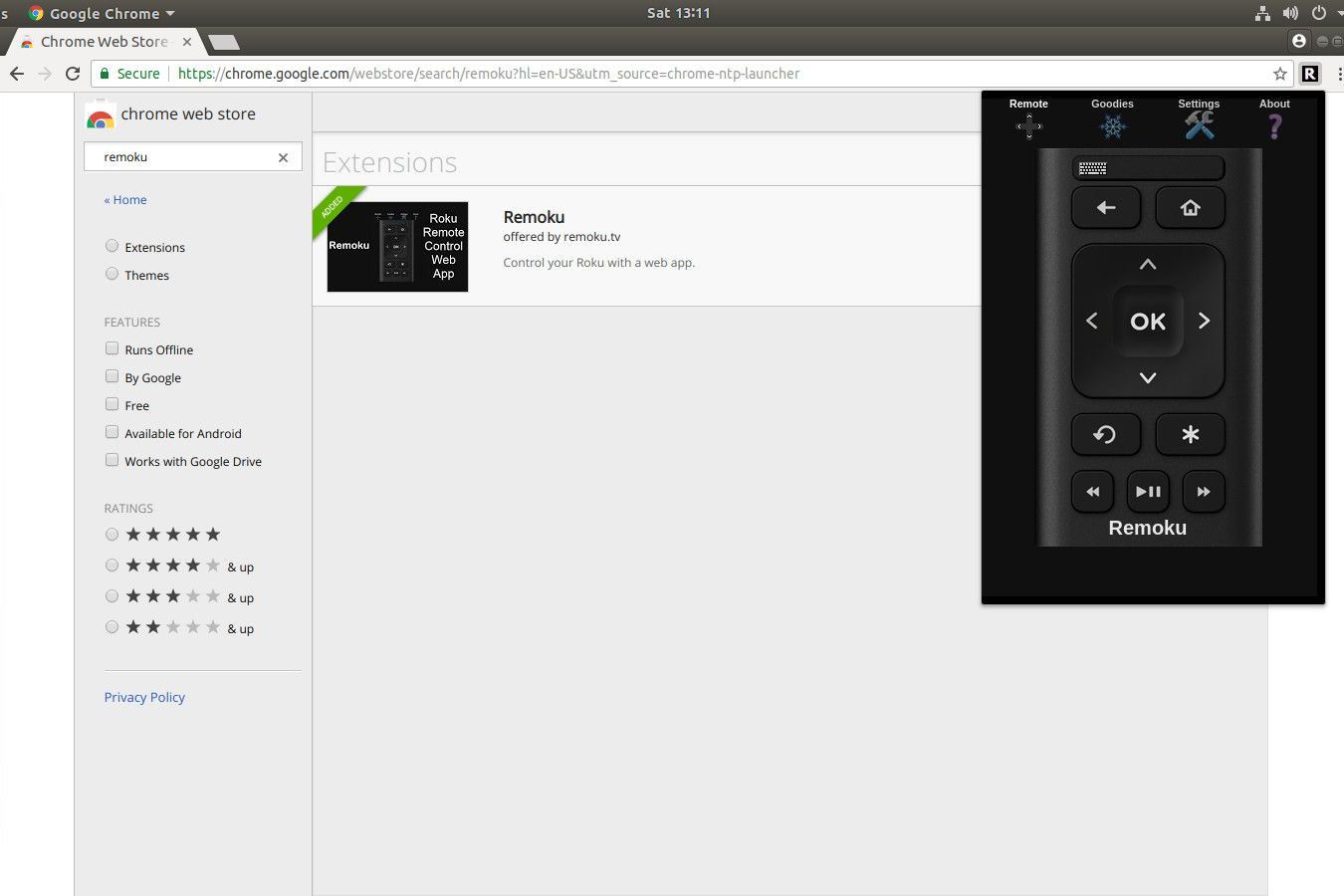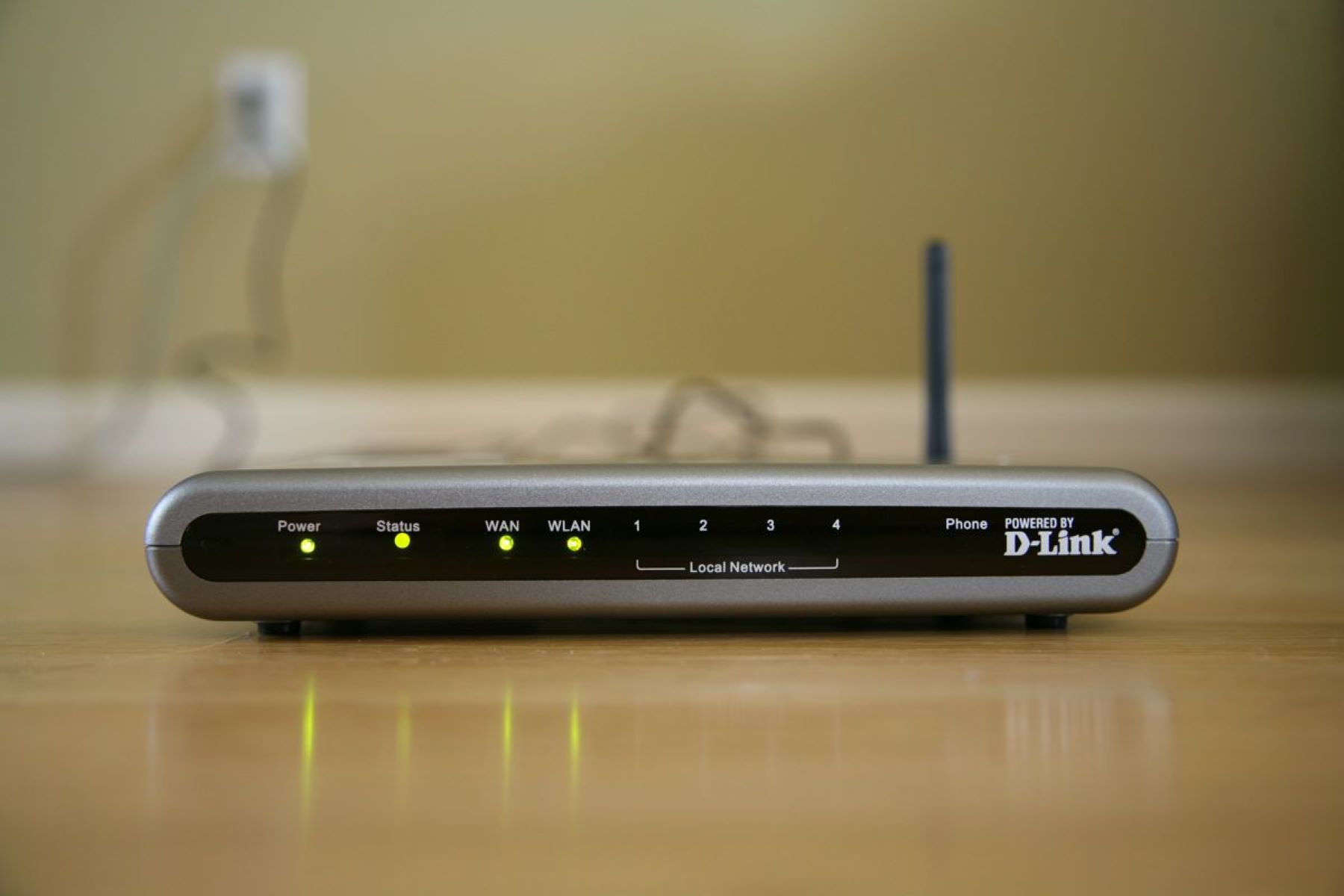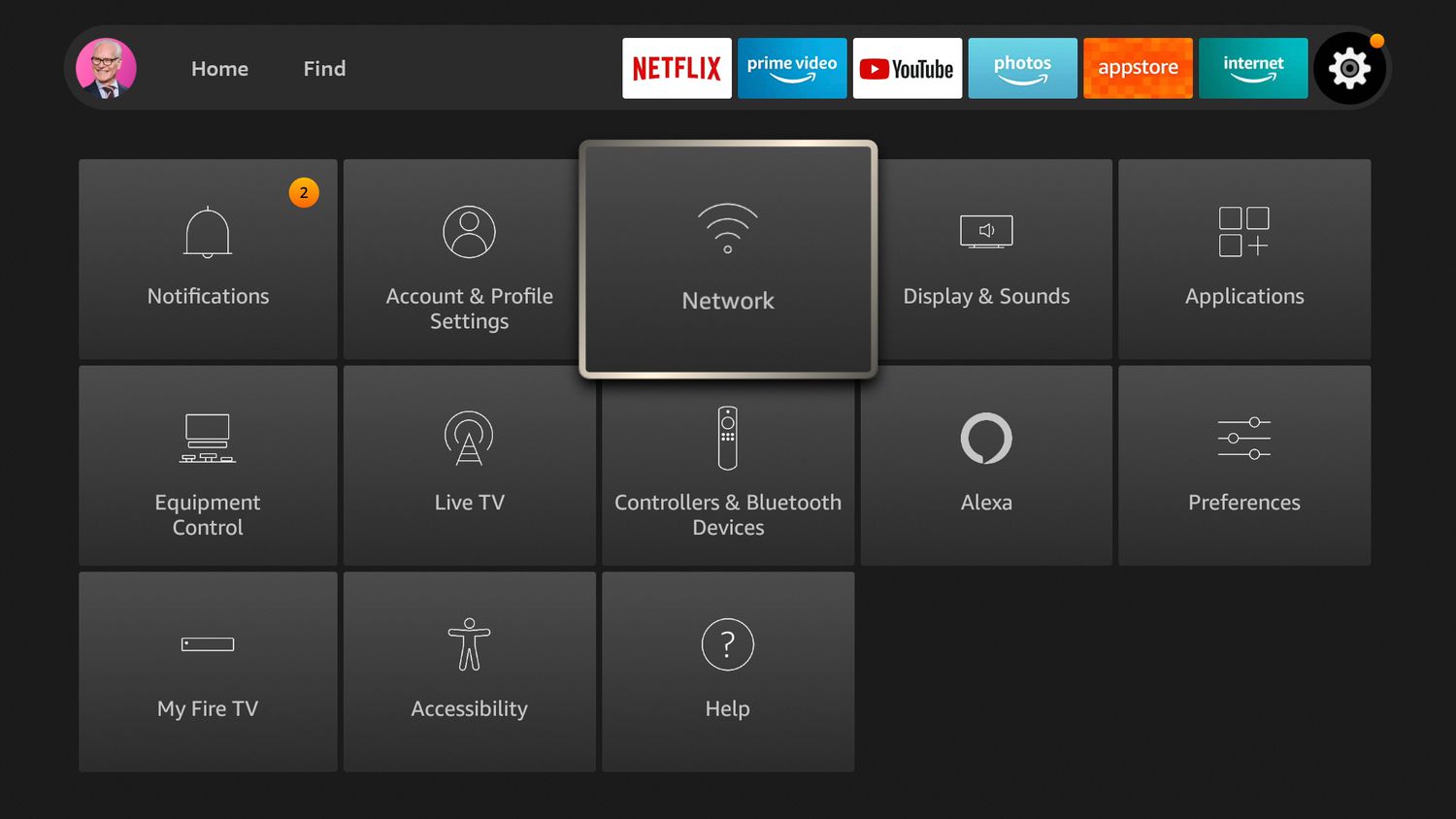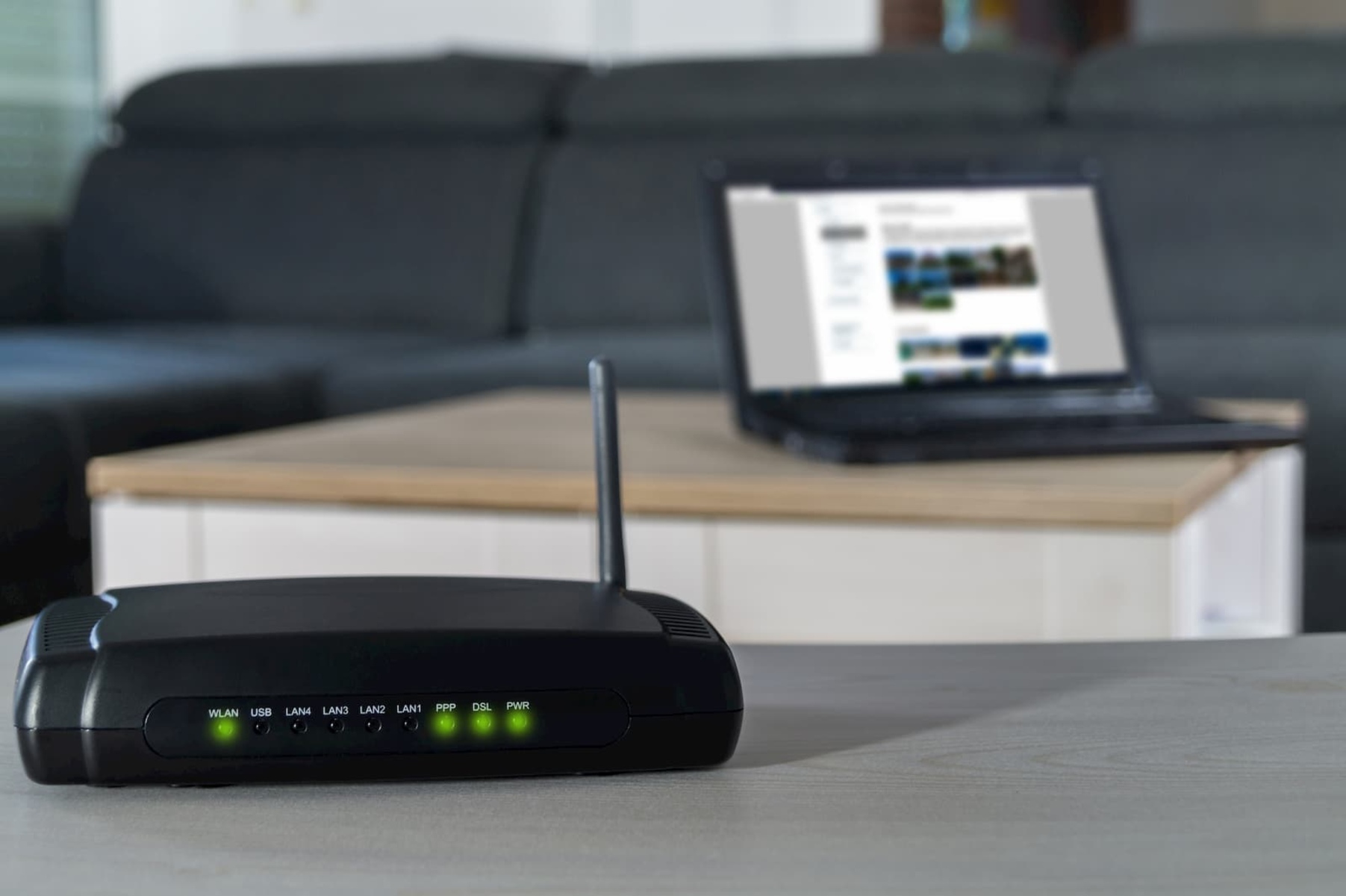Introduction
A router is a vital component of any computer network, responsible for directing network traffic and ensuring that data packets are efficiently delivered to their intended destinations. However, for a router to perform this function effectively, it needs to be aware of all the devices connected to its network. This awareness enables the router to make informed decisions about how to forward data packets and establish communication links.
In this article, we will explore the process by which routers learn about all the devices on their network. We will delve into various protocols and mechanisms that routers employ to discover and maintain an up-to-date inventory of devices, allowing for seamless communication within the network.
Understanding the process by which routers learn about devices on their network is crucial for troubleshooting network issues, managing network security, and optimizing network performance. So let’s dive into the details of this dynamic and ongoing discovery process.
Throughout this article, we will explore key technologies and protocols such as Address Resolution Protocol (ARP), Dynamic Host Configuration Protocol (DHCP), routing tables, Internet Control Message Protocol (ICMP), proxy ARP, and other methods of device discovery.
What is a router?
A router is a networking device that connects multiple networks together, allowing for the efficient transfer of data packets between these networks. It operates at the network layer of the OSI (Open Systems Interconnection) model and serves as a gateway for data to travel between different networks, whether they are local area networks (LANs) or wide area networks (WANs).
Routers play a critical role in directing network traffic by examining the header information of incoming data packets and determining the best path for them to reach their destination. They use routing tables, a collection of network addresses and associated metrics, to make intelligent decisions about packet forwarding.
Unlike switches and hubs that operate at the data link layer, routers have the ability to connect networks with different protocols. For example, a router can bridge the gap between an Ethernet LAN and a Wi-Fi network, allowing devices from both networks to communicate with each other seamlessly.
One of the key functions of a router is to provide network addressing and translation capabilities. It assigns unique IP addresses to devices connected to the network, ensuring that data is routed accurately to the intended recipient. Routers also manage network traffic by implementing Quality of Service (QoS) mechanisms, prioritizing certain types of data transmission for optimal performance.
Moreover, routers offer a layer of security by implementing features like firewalls, intrusion detection systems, and virtual private network (VPN) capabilities. These security measures protect the network from unauthorized access and potential threats.
In summary, a router is a fundamental component of modern computer networks. Its primary function is to interconnect multiple networks, facilitate efficient data transfer, and perform tasks such as routing, addressing, security, and network management.
How does a router learn about devices on its network?
For a router to effectively manage network traffic, it must have an accurate understanding of the devices connected to its network. This knowledge enables the router to make informed decisions on how to route data packets and establish communication links. Let’s explore some of the methods by which routers learn about devices on their network.
Address Resolution Protocol (ARP): ARP is a protocol used by routers to map an IP address to a corresponding physical (MAC) address on a local network. When a device wants to communicate with another device on the same network, it sends out an ARP request asking for the MAC address associated with a specific IP address. The router intercepts this request and provides the MAC address, allowing the devices to communicate directly.
Dynamic Host Configuration Protocol (DHCP): DHCP enables routers to assign IP addresses to devices automatically. When a device connects to the network, it sends a DHCP request to the router, which responds by assigning a unique IP address from a pool of available addresses. This way, the router keeps track of the devices connected to the network and their assigned IP addresses.
Routing Table: Routers maintain a routing table that contains information about the network addresses and associated metrics. These tables are either manually configured or dynamically updated through routing protocols such as OSPF (Open Shortest Path First) or BGP (Border Gateway Protocol). By constantly updating and referring to the routing table, routers can make intelligent decisions on how to forward data packets based on the destination IP address.
Internet Control Message Protocol (ICMP): ICMP is a protocol used for diagnostic and error reporting purposes in IP networks. Routers often utilize ICMP to discover devices on their network by sending out ICMP echo requests (ping) and receiving ICMP echo replies. This allows routers to identify active devices and determine their responsiveness.
Proxy ARP: In some cases where a device wants to communicate with a device on a different network but believes it is on the same network, the router can respond on behalf of the device using proxy ARP. The router determines the actual network location of the destination device and forwards any incoming packets accordingly.
Other methods of device discovery: In addition to the above methods, routers can use various other techniques to learn about devices on their network. This may include monitoring network traffic for device identifiers, analyzing network protocols to identify connected devices, or even leveraging network management tools and protocols such as SNMP (Simple Network Management Protocol) to gather information about the network infrastructure.
By utilizing a combination of these methods and protocols, routers gain a comprehensive understanding of the devices on their network, enabling them to efficiently manage network traffic and ensure seamless communication.
ARP (Address Resolution Protocol)
ARP, or Address Resolution Protocol, is a protocol used by routers to map an IP address to a corresponding physical (MAC) address on a local network. It plays a crucial role in enabling communication between devices within the same network. ARP operates in the Link Layer of the OSI model, facilitating the translation between logical IP addresses and physical MAC addresses.
When a device on a network wants to communicate with another device using its IP address, it needs to know the corresponding MAC address to establish a direct connection. This is where ARP comes into play. The device sends an ARP request, also known as an ARP query, to determine the MAC address associated with the target IP address.
The ARP request is broadcasted on the local network, and all devices on the same network receive it. However, only the device with the matching IP address will respond with an ARP reply, providing its MAC address. Once the requesting device receives the ARP reply, it can establish a direct communication link with the target device using the MAC address.
ARP maintains the mapping between IP addresses and MAC addresses using an ARP cache, also known as the ARP table. The ARP cache is a local database on a router that stores the IP addresses and corresponding MAC addresses of devices within the network. This cache allows routers to quickly and efficiently map IP addresses to MAC addresses, minimizing the need for frequent ARP requests.
ARP operates on a simple principle of “Who has this IP address? Please tell me your MAC address.” The process starts with the source device checking its ARP cache for the MAC address associated with the destination IP address. If the MAC address is not present in the cache, the source device sends an ARP broadcast to all devices on the network, seeking a response from the device with the matching IP address.
It is important to note that the ARP protocol assumes that devices on the local network trust each other and respond to ARP requests truthfully. This assumption is essential for the proper functioning of ARP-based communication on a network.
In summary, ARP (Address Resolution Protocol) is a key protocol used by routers to discover the MAC addresses associated with IP addresses on a local network. Through the ARP process of sending requests and receiving replies, routers maintain an up-to-date mapping of IP addresses to MAC addresses, enabling devices to communicate effectively within the network.
DHCP (Dynamic Host Configuration Protocol)
DHCP, or Dynamic Host Configuration Protocol, is a network protocol used by routers to automatically assign IP addresses and configure network parameters for devices joining a network. It simplifies the process of network configuration by dynamically allocating and managing IP addresses, subnet masks, default gateways, and other essential information for connected devices.
When a device connects to a network, it sends a DHCP Discover message to the network in search of a DHCP server. The DHCP server, typically running on a router, responds with a DHCP Offer message, proposing an available IP address along with the necessary configuration settings.
If the device accepts the offered IP address, it sends a DHCP Request message to the DHCP server, confirming its intention to utilize the suggested IP address. The DHCP server acknowledges the request with a DHCP Acknowledge message, informing the device that the IP address has been successfully assigned.
One of the significant advantages of DHCP is its ability to prevent IP address conflicts. With manual IP address assignment, multiple devices joining a network could potentially choose the same IP address, resulting in conflicts and network disruptions. DHCP resolves this issue by centrally managing the assignment of unique IP addresses, ensuring that each device on the network receives a distinct IP address.
DHCP also supports IP address lease management. When a device is no longer connected to the network or shuts down, the DHCP server can reclaim the assigned IP address and make it available for future use. This efficient allocation of IP addresses ensures optimal utilization of available resources within the network.
Furthermore, DHCP can provide additional configuration parameters to devices, such as DNS (Domain Name System) server addresses, WINS (Windows Internet Name Service) server addresses, and other network-specific settings. These configurations enhance the overall connectivity and convenience of devices on the network.
Administrators can configure DHCP with various options, including the range of available IP addresses, lease duration, subnet masks, default gateways, and more. This flexibility allows for customization based on the specific needs and requirements of the network.
DHCP simplifies network management by automating the process of IP address allocation and configuration. It eliminates the manual effort required to individually assign IP addresses to each connected device, making network administration more efficient and scalable.
In summary, DHCP (Dynamic Host Configuration Protocol) is a network protocol used by routers to automatically assign IP addresses and configure network parameters for devices on a network. By streamlining the process of network configuration, DHCP ensures efficient utilization of IP addresses, prevents conflicts, and simplifies network administration.
Routing Table
A routing table is a vital component of a router’s functionality, serving as a roadmap that guides the router in making intelligent decisions on how to forward data packets. It is a critical data structure that contains information about network destinations, next hop gateways, and associated metrics. Let’s explore the significance of routing tables and how routers utilize them to determine the best path for data transmission.
A routing table consists of a list of network destinations and the corresponding next hop IP addresses or interface through which the data packets should be forwarded. Each entry in the routing table specifies a network or a network subnet and provides information on how to reach that destination.
When a router receives a data packet, it examines the destination IP address and looks it up in its routing table. The router compares the destination IP address with the entries in the routing table to find the most specific match. This is known as the longest prefix match. The router selects the entry with the longest matching network prefix, indicating the most appropriate route to reach the destination.
In addition to the next hop IP address or interface, routing table entries include metrics or cost values that help routers determine the optimal path for data transmission. These metrics are often based on factors such as bandwidth, delay, reliability, and administrative preferences. The router uses the metrics to calculate the best route by taking into account the cost associated with each potential path.
Routing tables can be either static or dynamic. Static routing tables are manually configured by network administrators, providing explicit instructions on how to route data packets for specific network destinations. This method is suitable for small networks or situations where the network topology remains relatively stable.
Dynamic routing tables, on the other hand, are automatically updated through routing protocols such as OSPF (Open Shortest Path First), RIP (Routing Information Protocol), or BGP (Border Gateway Protocol). These protocols enable routers to exchange routing information with neighboring routers, leading to the dynamic calculation and propagation of routing table updates. Dynamic routing allows networks to adapt to changes in topology, link failures, or varying network conditions.
Routers implement various algorithms and mechanisms to update and maintain routing tables. These include distance-vector algorithms, link-state algorithms, path vector algorithms, and convergence protocols. The goal is to ensure that routing tables accurately reflect the current network topology and provide efficient routes for data transmission.
Routing tables play a vital role in network performance, enabling routers to make data forwarding decisions swiftly and efficiently. By maintaining an up-to-date routing table, routers can optimize network traffic, minimize latency, and ensure reliable connectivity between networks.
In summary, a routing table serves as a critical tool for routers, providing a roadmap for data packet forwarding. It contains network destinations, next hop information, and metrics to determine the optimal path for data transmission. By utilizing routing tables, routers enable efficient network communication and ensure effective data routing across interconnected networks.
ICMP (Internet Control Message Protocol)
ICMP, or Internet Control Message Protocol, is a network protocol that plays a crucial role in network diagnostic and error reporting. It operates at the network layer of the OSI model and is used by routers to exchange control messages and provide feedback on network conditions. Let’s explore the significance of ICMP and how routers utilize it for network troubleshooting and management.
ICMP is primarily used for diagnostic purposes, allowing devices to communicate network-related information and respond to network errors. Routers utilize ICMP to perform tasks such as sending ping requests, informing devices about network congestion, reporting errors, and exchanging routing information.
Ping, the most commonly used ICMP feature, allows devices to test network connectivity by sending ICMP Echo Request messages to a specific destination IP address. The receiving device responds with an ICMP Echo Reply, indicating that it is reachable and responsive. Ping is often used to check the availability of a network device, measure round-trip times, and troubleshoot network connectivity issues.
ICMP also includes error reporting mechanisms to notify devices about network-related issues. For example, when a packet encounters a problem during transmission, the router may generate an ICMP message to inform the sender about the issue. Common ICMP error messages include Destination Unreachable, Time Exceeded, and Redirect.
Another critical use of ICMP in the context of routers is the exchange of routing information. ICMP Router Discovery messages enable routers to announce their presence and make routing information available to other routers on the network. This facilitates the dynamic exchange of routing table updates and enables routers to maintain an accurate understanding of network topology.
Additionally, routers use ICMP to report and manage network congestion. When a network becomes congested and cannot handle incoming traffic, routers may generate ICMP Source Quench messages. These messages inform the sender to reduce the rate of data transmission, helping to alleviate congestion and maintain smooth network operation.
ICMP supports numerous other functionalities and message types, including Address Mask Request and Reply, Timestamp Request and Reply, and Information Request and Reply. Each message type serves a specific purpose and contributes to the efficient operation of network communication and troubleshooting.
While ICMP is a valuable protocol, it is worth noting that its misuse can potentially pose security risks. Some attacks, such as ICMP flood attacks, exploit vulnerabilities in ICMP to flood a network with a high volume of ICMP messages, causing network congestion and disruption. Network administrators employ various security measures, such as ICMP rate limiting and filtering, to mitigate these risks.
In summary, ICMP (Internet Control Message Protocol) is a vital network protocol used by routers for diagnostic and error reporting purposes. It facilitates the exchange of control messages, supports network troubleshooting, and enables routers to communicate important network information. By utilizing ICMP, routers can ensure efficient network management, troubleshooting, and communication.
Proxy ARP
Proxy ARP, short for Proxy Address Resolution Protocol, is a technique used by routers to respond to Address Resolution Protocol (ARP) requests on behalf of devices in situations where the destination device appears to be on the same network but is actually located on a different network or subnet. Proxy ARP allows routers to bridge the gap between networks and facilitate communication between devices that would not typically be able to communicate directly.
When a device wants to communicate with another device on a different network, it typically sends an ARP request to determine the media access control (MAC) address of the destination device based on its IP address. In a normal scenario, ARP requests and replies only work within the same network or subnet. However, there are cases when a device mistakenly assumes that the destination device resides on the same network, resulting in a failed ARP request.
In such cases, the router that connects the two networks can act as a proxy and respond to the ARP request on behalf of the destination device. When the router receives an ARP request for a device on a different network, it checks its ARP cache and routing table to determine the actual network location of the destination device. It then replies to the ARP request with its own MAC address as if it were the destination device.
Once the requesting device receives the ARP reply from the router, it establishes a direct communication link with the router using the provided MAC address. The router then forwards any incoming packets to the correct destination device on the other network, thereby facilitating communication between the devices.
Proxy ARP is especially useful in scenarios where devices on different networks need to communicate but do not have a direct routing path between them. For example, in a larger network divided into multiple subnets, devices in different subnets may need to communicate with each other. Proxy ARP allows these devices to appear as if they are on the same network, enabling seamless communication without the need for complex routing configurations.
It is important to note that while Proxy ARP can be beneficial in certain scenarios, it can also introduce security and performance considerations. Responding to ARP requests on behalf of other devices can increase network overhead and potential vulnerability to ARP spoofing attacks. Therefore, it is important to implement proper security measures, such as ARP inspection and filtering, to mitigate these risks.
In summary, Proxy ARP is a technique used by routers to respond to ARP requests on behalf of devices on different networks or subnets, allowing them to communicate as if they were on the same network. By bridging the gap between networks, Proxy ARP enables seamless communication and facilitates network connectivity in situations where direct routing is not available.
Other methods of device discovery
In addition to the Address Resolution Protocol (ARP), there are several other methods and techniques that routers can utilize to discover devices on their network. These methods complement ARP and provide alternative ways to identify and manage devices connected to the network. Let’s explore some of these methods:
Neighbor Discovery Protocol (NDP): NDP is a protocol used in IPv6 networks to discover and manage devices on the same subnet. It allows routers to determine neighboring devices, their IP addresses, and their link-layer addresses. NDP performs some of the functions equivalent to ARP in IPv4 networks, including address resolution and router discovery, but with additional features specific to IPv6.
Routing Information Protocol (RIP): RIP is one of the oldest distance vector routing protocols. In addition to facilitating routing information exchange between routers, RIP can also provide device discovery capabilities. By exchanging routing updates, routers can learn about the network topology and identify devices that are connected to the network through adjacent routers in the RIP routing domain.
Simple Network Management Protocol (SNMP): SNMP is a protocol that allows for network management and monitoring. It enables routers to collect and manage detailed information about devices on the network. Through SNMP, routers can query devices for information such as system configuration, network statistics, and device status. This information can be used for device discovery purposes and for managing network performance and security.
Network scanning tools: Network scanning tools can be employed to discover devices on a network by actively probing IP addresses and scanning network ports. These tools send network packets to a range of IP addresses or across a specified subnet to identify active hosts and detect available services. Network scanning tools provide a comprehensive view of devices on the network, including host names, IP addresses, open ports, and network services running on each device.
Dynamic Host Configuration Protocol (DHCP) logs: DHCP servers maintain logs of IP addresses and devices that have obtained IP address assignments. These logs can be analyzed to identify devices connected to the network. By examining the DHCP lease information, network administrators can gain insights into the devices currently active on the network and track their IP address assignments.
These are just a few examples of the other methods and techniques that routers can employ to discover devices on their network. By combining different mechanisms, routers can build a comprehensive picture of the devices connected to the network, facilitating effective network management, troubleshooting, and optimization.
Conclusion
Understanding how routers learn about devices on their network is crucial for efficient network management and troubleshooting. Through protocols like Address Resolution Protocol (ARP) and Dynamic Host Configuration Protocol (DHCP), routers can discover and maintain an up-to-date inventory of devices. ARP enables routers to map IP addresses to MAC addresses within the same network, while DHCP automates the process of assigning IP addresses and configuring network parameters.
In addition to ARP and DHCP, routers rely on routing tables to make informed decisions on how to forward data packets. These tables contain network destinations, next hop information, and associated metrics. ICMP (Internet Control Message Protocol) serves as a means for routers to diagnose network issues, exchange control messages, and report errors.
Furthermore, routers can utilize Proxy ARP to bridge the gap between networks and facilitate communication between devices that would not typically be able to communicate directly. Other methods of device discovery, such as Neighbor Discovery Protocol (NDP), Routing Information Protocol (RIP), SNMP, network scanning tools, and DHCP logs, complement ARP and provide alternative ways to identify and manage devices on the network.
By combining these methods and protocols, routers can maintain an accurate inventory of devices, optimize network traffic, identify network problems, and ensure efficient communication within the network.
In conclusion, the process of routers learning about devices on their network involves a combination of protocols and techniques, each serving a specific purpose in network discovery, management, and troubleshooting. Understanding these methods empowers network administrators to efficiently manage their networks, optimize performance, and ensure seamless connectivity for all devices.







